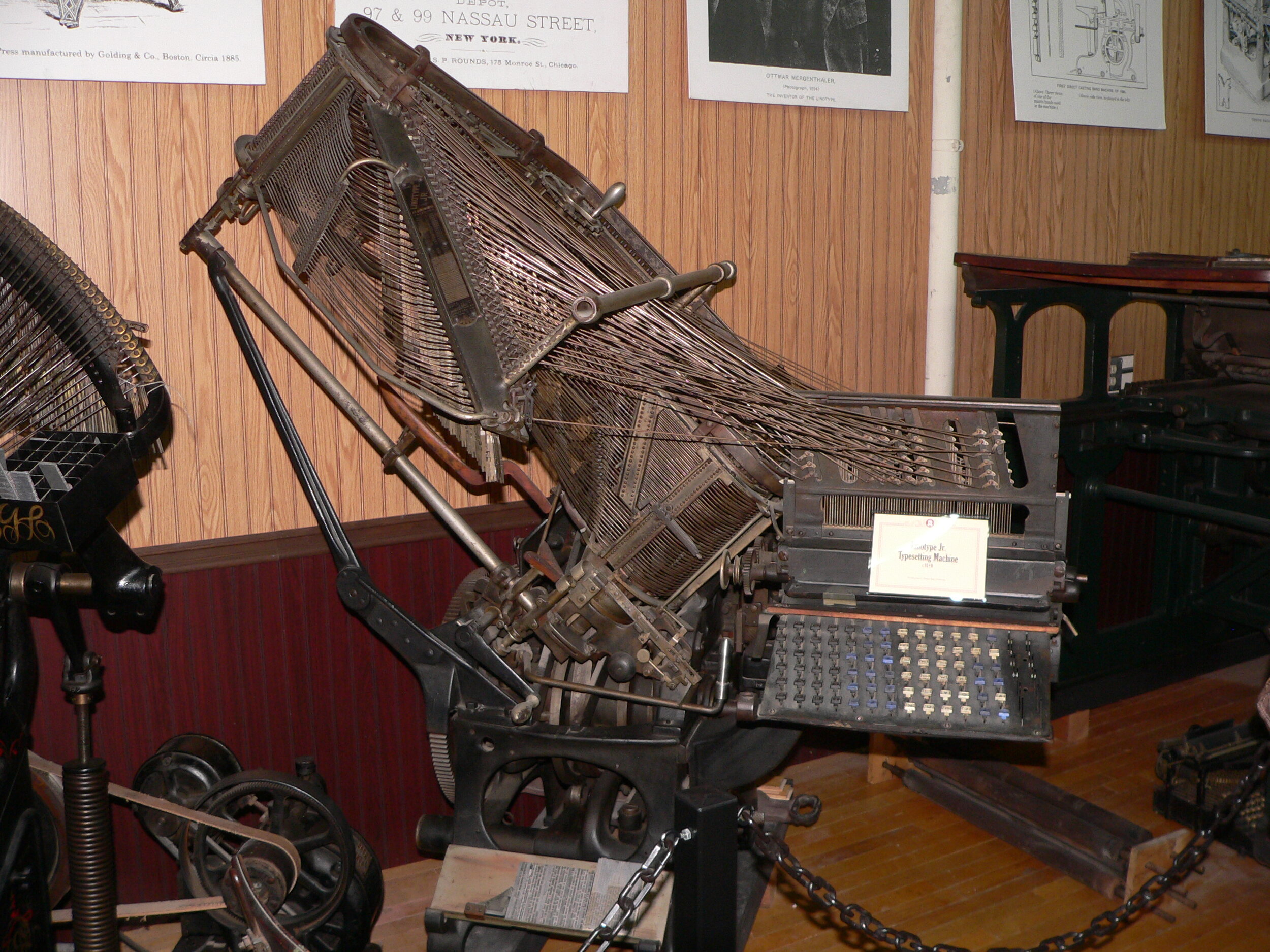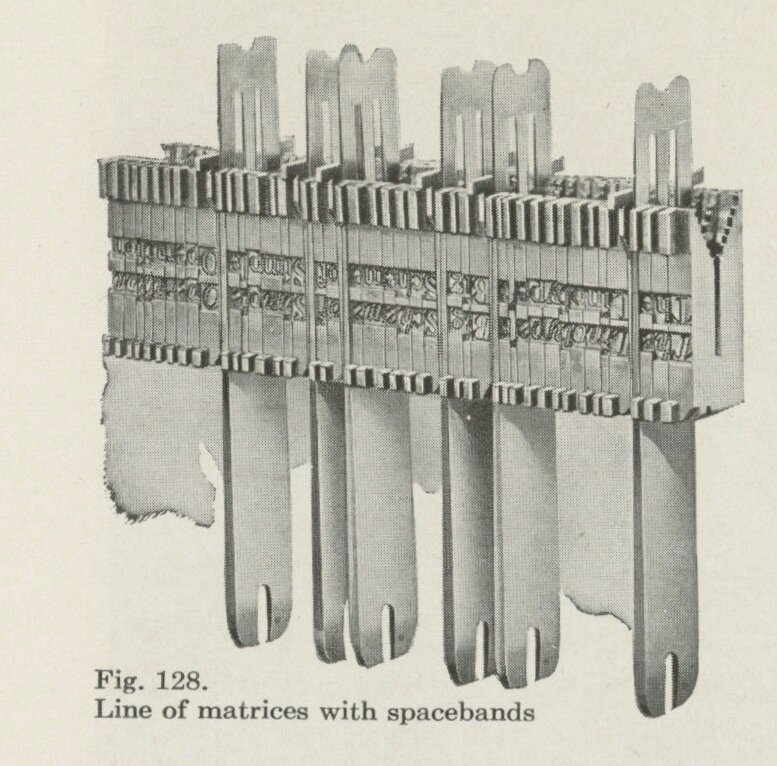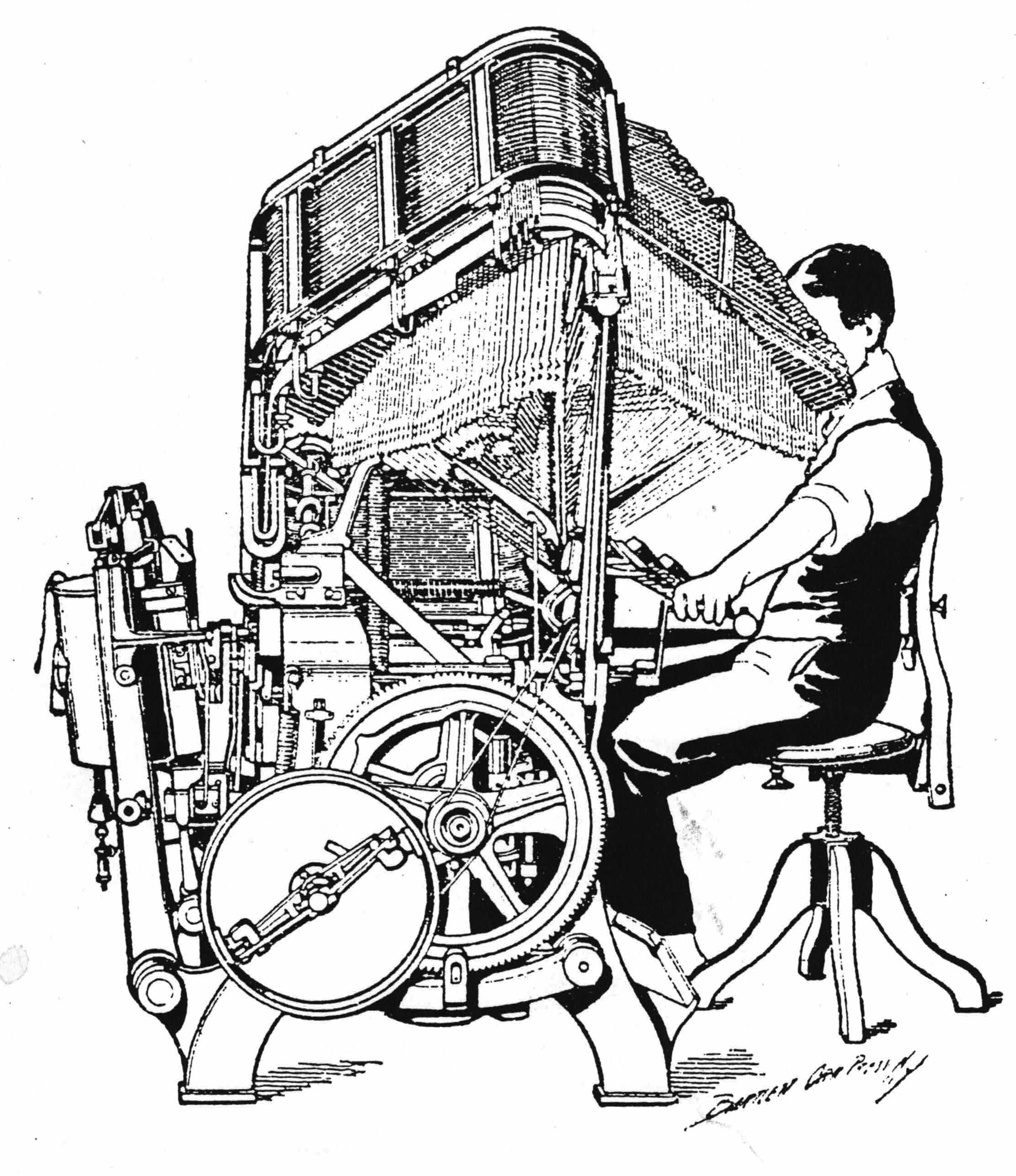1908 LINOTYPE JUNIOR
In the main gallery of the Museum, Linotype Junior is sitting right beside the Rogers Typograph and the two machines look almost identical. The inventor of the Typograph, John R. Rogers, was actually the brains behind the Linotype Junior as well.
In the 1890s, the inventor John R. Rogers was unable to put his typecasting machine, the Typograph, on the market in America because the Linotype company had patented the idea of casting lines of type. Rogers was, understandably, quite unhappy with this turn of events.
Later on, the Linotype company ran into their own issues with patent infringement. The company had been using a spacing device in their machines that had already been patented by a man named Jacob Shuckers. Shuckers didn’t even have a machine of his own, but he was still able to sue the company for using his idea. After Shuckers took the Linotype company to court, Rogers decided to give the Linotype company a taste of their own medicine. Rogers bought the patent from Shuckers and used it to sue Linotype himself. The massive company largely ignored Rogers though and instead tasked Ottmar Mergenthaler, the inventor of the Linotype, with designing a new spacing mechanism that hadn’t been patented yet.
When his scheme to get back at the Linotype company didn’t work, Rogers adopted another strategy. He went to all the users of the Linotype, which included major newspapers, and threatened them with lawsuits for using the patented spacing material. This finally put pressure on Linotype to settle with Rogers and give him a sizable payout. This debacle infuriated the Linotype company so much that they kicked Mergenthaler out of the company and gave his job to Rogers.
Once Rogers was working for Linotype, the company revisited his idea for the Typograph. Smaller businesses were still using the Unitype and Linotype wasn’t having much luck finding a market with them. The newly reworked Typograph came onto the market as the Linotype Junior, which was a half-priced model of the regular Linotype. The wires and hanging matrices on the Linotype Junior are more or less identical to the Typograph. The main difference is that the operator no longer needed to tip the machine backwards to get the matrices back in place. Now they continued along a track to the back of the machine, where they are returned to their starting point.
By the end of World War I, the Linotype company had killed off the Unitype by allowing printers to trade them in for Linotypes. Once they eliminated the Unitype, they then implemented the same strategy by destroying Linotype Juniors that were traded in for full price models. There are only two Linotype Juniors left in the world and both of them are in our collection.










